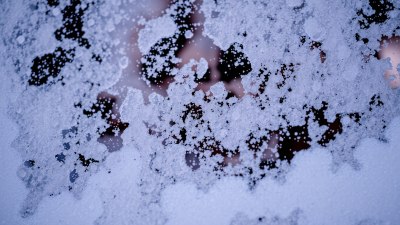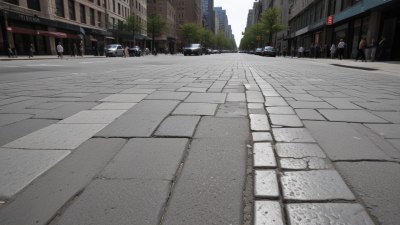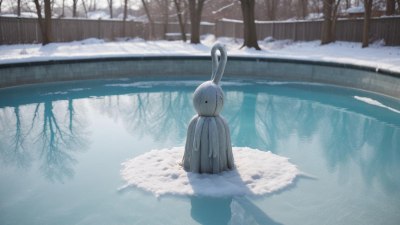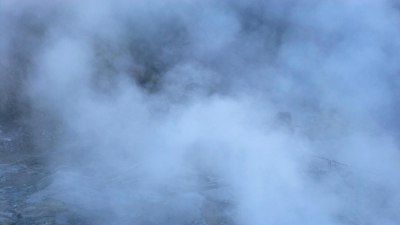What To Do When Your Shoes Make Squish Noises and the Day Has Barely Started
Discover effective solutions for squishy, noisy shoes to keep your day comfortable and dry from the very start.
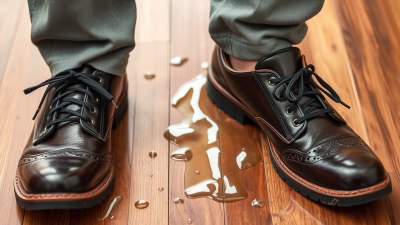
Image created with Flux Schnell
There’s nothing quite as frustrating as stepping out for the day only to hear your shoes making that annoying squish noise with every step. It’s an immediate sign that something isn’t right, often hinting at moisture trapped inside your footwear. When your shoes are noisy and wet early in the day, it can be uncomfortable, embarrassing, and even harmful to the shoes' longevity if not addressed promptly. This comprehensive guide explores the reasons behind squishy shoe noises, practical steps to fix the issue, preventive measures to avoid recurrence, and additional tips for maintaining dry, odor-free footwear.
Understanding the Root Cause of Squishy Noises in Shoes
Before seeking a solution, it's important to understand why your shoes make that loud squish sound. Typically, this noise indicates that moisture has infiltrated the interior of your shoes. The moisture can come from various sources such as rain, puddles, sweat, or even accidental spills. When the inside of the shoe, including the insole and lining, holds water, every step compresses the trapped liquid, creating that characteristic squishy noise.
Several factors contribute to this unwanted moisture build-up, important to recognize if you want to truly solve the problem:
- Poor Waterproofing: Shoes without adequate waterproof materials or treatment allow water to seep through the fabric or leather.
- Worn Out Soles or Seams: Over time, gaps in seams or degraded soles can let water enter inside.
- Excessive Sweat: Feet naturally perspire; without proper ventilation or moisture-wicking insoles, sweat accumulates enough to cause squishing sounds.
- Inadequate Drying: Shoes that remain damp from prior wear can start the day wet and noisy.
Knowing these causes helps tailor solutions that not only fix the squish but also prevent it in the future.
Immediate Actions When You Notice Squishy Shoes Early in the Day
When you’re out and about, hearing your shoes squish can quickly derail your plans. Here are immediate steps to take to minimize the discomfort and prevent further damage:
1. Remove the Insoles
Most shoes come with removable insoles. Taking these out allows air inside the shoe to circulate, helping to dry out the moisture faster. Carefully remove and set them aside in a dry spot, preferably where they can absorb air without direct sunlight which might damage some materials.
2. Shake Out Excess Water
Turn your shoes upside down and shake them to force out any trapped water. This can help reduce the amount of residual moisture inside.
3. Use Absorbent Materials
If you have access to napkins, paper towels, or even clean cloths, stuff them inside the shoes. These materials will soak up much of the water and alleviate the squishing noise. Remember to replace damp absorbents frequently.
4. Find a Dry, Ventilated Spot
Place your shoes somewhere with good ventilation if possible. Even a small breeze can start drying the interior. Avoid leaving them near direct heat sources such as radiators, which can warp or damage materials.
5. Change Socks and Footwear
If your socks are wet too, change into dry ones quickly. Consider carrying an extra pair of shoes for emergencies if you frequently encounter moisture issues or poor weather.
6. Apply Foot Powder
If you’re dealing with sweaty, moist shoes, applying antifungal or moisture-absorbing foot powder before putting the shoes back on can reduce wetness and odor.
How to Dry Wet Shoes Effectively at Home
Once you’re home, the goal is to thoroughly dry your shoes to prevent odor, bacteria, and shoe material damage:
1. Unlace and Open Your Shoes
Loosen the laces or straps and open up the shoes as much as possible. This exposes more surface area to air and accelerates drying.
2. Remove Insoles and Laces
Taking everything removable out helps dry these components independently and prevents them from hindering airflow inside the shoe.
3. Use Newspaper or Paper Towels
Crumple up newspaper and stuff it inside the shoe, especially in the toe box, where moisture tends to accumulate most. Newspaper is highly absorbent and will draw moisture out overnight. Change the newspaper every few hours for best results.
4. Air Dry in a Warm, Ventilated Area
Place the shoes near an open window or in a well-ventilated room away from direct sun or intense heat. Moderate warmth encourages evaporation without damaging your shoes.
5. Avoid Using Direct Heaters or Dryers
Using a hairdryer or putting shoes near a radiator or fireplace can cause warped soles, cracked glue, and hardened leather. Patience is key in gentle air drying.
6. Consider Using Desiccants
If you have silica gel packs or other moisture absorber packets, place them inside your shoes during drying. These are especially useful for prolonged drying in high humidity conditions.
7. Treat Insoles Separately
Let removable insoles dry independently in a similar air ventilated environment. You can also lightly sprinkle them with baking soda to neutralize odors during drying.
Preventive Measures to Avoid Squishy, Noisy Shoes in the Future
Once the immediate problem is solved, prevention is better than cure. Here are several tips to maintain dry, comfortable shoes:
1. Invest in Waterproof Footwear
For those who face wet conditions regularly, waterproof shoes made with Gore-Tex or similar membranes are ideal. They block water ingress while allowing breathability.
2. Regularly Apply Waterproofing Sprays
Leather and fabric shoes benefit from protective sprays that help repel water. Apply these every few months or after cleaning your shoes.
3. Use Moisture-Wicking Socks
Specialized synthetic socks draw sweat away from your feet and dry faster, reducing internal shoe moisture.
4. Rotate Your Shoes
Wearing the same pair daily doesn’t give shoes enough time to dry out fully. Rotate between two or more pairs to extend shoe lifespan and reduce moisture build-up.
5. Dry Shoes Properly After Each Use
After a day in wet or sweaty shoes, remove insoles and dry the shoes promptly using the newspaper method. Avoid storing damp shoes in closed bags or lockers.
6. Replace Worn-Out Insoles
Old insoles tend to retain moisture and odors. Replace them periodically with moisture-wicking or antibacterial versions.
Additional Tips to Manage Shoe Moisture and Odor
Besides fixing squish noises and drying your shoes, managing moisture helps keep your footwear fresh and healthy:
1. Use Shoe Deodorizers
There are commercial sprays and powders designed to kill bacteria and control odor in shoes. Use regularly for best effect.
2. Freeze Your Shoes
Placing shoes in a plastic bag and freezing them overnight can kill odor-causing bacteria without harming the materials.
3. Explore Shoe Drying Devices
Battery-operated or electric shoe dryers gently circulate warm air inside your shoes to speed drying without heat damage.
4. Avoid Wearing Shoes Without Socks
Socks absorb sweat and protect the shoe interior. Going sockless increases moisture contact directly inside the shoe, making the problem worse.
5. Clean Your Shoes Regularly
Dirt and grime trap moisture and bacteria. Regular cleaning according to manufacturer recommendations keeps shoes healthier and more breathable.
In summary, squishy noisy shoes in the early part of the day result primarily from trapped moisture, which can stem from environmental conditions, shoe construction, or foot perspiration. Immediate remedial actions such as removing insoles and using absorbent materials help reduce discomfort, while thorough drying methods at home restore your shoes’ condition. Preventive practices including waterproof footwear choice, daily shoe rotation, moisture-wicking socks, and proper drying techniques ensure dry, silent, and comfortable steps. Following these comprehensive guidelines will keep the nuisance of squishy shoe noises at bay and preserve your footwear for many walks ahead.





